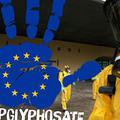A tavalyi kanadai tiltás után idén az USA-ból is kivonták a gyakran fejlődési rendellenességet okozó növelő biszfenol A (BpA) tartalmú cumisüvegeket. A Cincinnati Egyetem kutatása szerint forró folyadékoktól 55-ször gyorsabban kijut a cumisüveg anyagából a BpA, ami már káros lehet a csecsemők fejlődésére. Csecsemők vérében a felnőtt átlagnál 10-szer magasabb BpA koncentrációt mértek . (melléklet a BpA-s cumisüvegkről és a hatásairól). Az elmúlt években több mint 130 vizsgálat bizonyította , hogy a hormonhatáson túl a BpA növelheti a rák kockázatát, sőt hozzájárulhat az elhízáshoz is. Az amerikai tiltás után Nyugat-Európában a legtöbb cég kivonta a BpA-s cumisüvegeket a forgalomból, ám Magyarországon sajnos a mai napi a legtöbb cumisüveg alapanyaga a polikarbonát, melyben megtalálható a BpA. A Levegő Munkacsoport kéri az összes magyar európai parlamenti képviselőtől és képviselőjelölttől, illetve a kormányzattól: támogassa, hogy az EU is korlátozza a BpA-s cumisüvegeket.
Melléklet: A biszfenol A
Friss tanulmányok a biszfenol A-ról
A Harvard Egyetem 2009 májusában publikált tanulmánya szerint a gyermekek vizeletében a 2/3-val megnövekedett, miután csupán egy héten keresztül biszfenol A-t tartalmazó cumisüvegből ittak hideg italokat.
(http://www.ehponline.org/docs/2009/0900604/abstract.html)
Amerikai mérések csecsemők vérében a felnőtt átlagnál 10-szer magasabb BpA koncentrációt mértek 2009 tavaszán.
(http://www.ehponline.org/docs/2008/0800265/abstract.html)
A Cincinnati Egyetem kutatása szerint forró folyadékok hatására 55-ször gyorsabban kijut a cumisüveg anyagából. Ilyen mennyiségű BpA már káros lehet a csecsemők fejlődésére.
(http://www.FoodProductionDaily.com/news/ng.asp?n=82930&m=1FPD131&c=vdpfsxdhpygomrz)
Az elmúlt években több mint 130 vizsgálat bizonyította, hogy a hormonhatáson túl a BpA növelheti a rákkockázatot; hozzájárulhat az elhízáshoz, inzulin-rezisztenciát okoz, és hozzájárulhat a koraszülés kialakulásához is. Emlős kísérlek során a BpA-val mérgezett fejlődő állatok agya nem fejlődött normálisan.
(http://www.washingtonpost.com/wp-dyn/content/article/2009/03/05/AR2009030503285.html?hpid=sec-health) cumisüvegek és a biszfenol A:
Polikarbonát cumisüveg
A biszfenol A és foszgén reakciójával állítanak elő a polikarbonát műanyagot.
Amerikai lista a BPA-t tartalmazó polikarbonát cumisüvegekről:
• http://www.polliwogged.com/detail/full-list-of-bpa-containing-bottles-that-should-be-disappearing-soon/
Francia lista a BpA mentes cumisüvegekről:
• ADIRI,BORN-FREE, DODIE Initiation et Evolution, EVENFLO, GREEN TO GROW, MAM Care, MEDELA, Philips AVENT polipropilán, , THINKBABY.
Amerikai listák biztonságos bébi termékekről:
• http://www.zrecsguide.com/products/category/bottles/
http://www.squidoo.com/nontoxicbabybottles





Utolsó kommentek